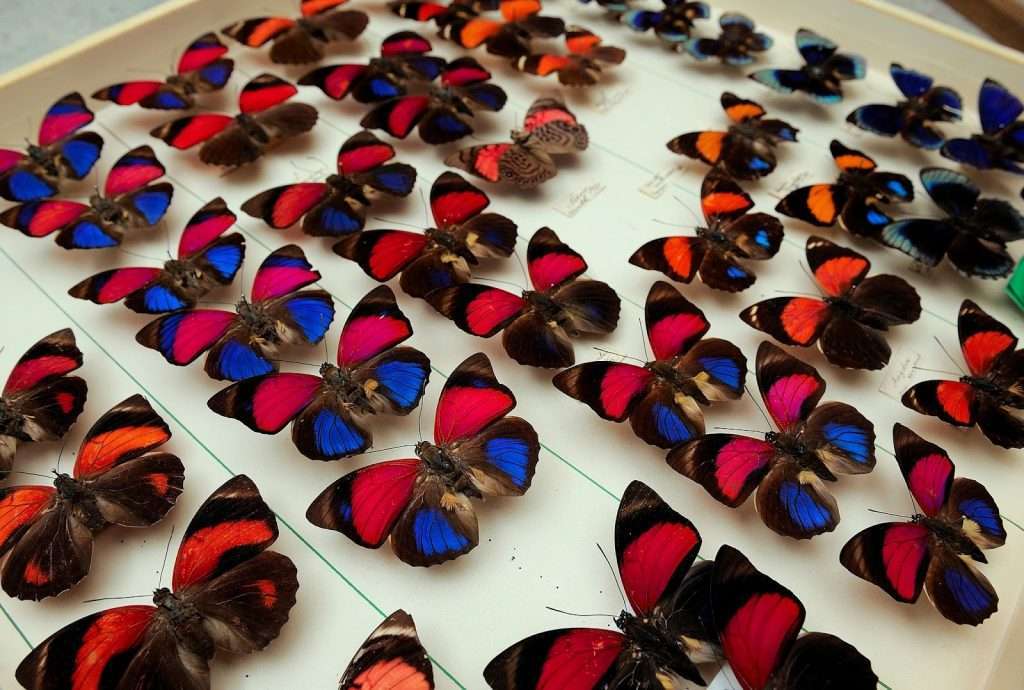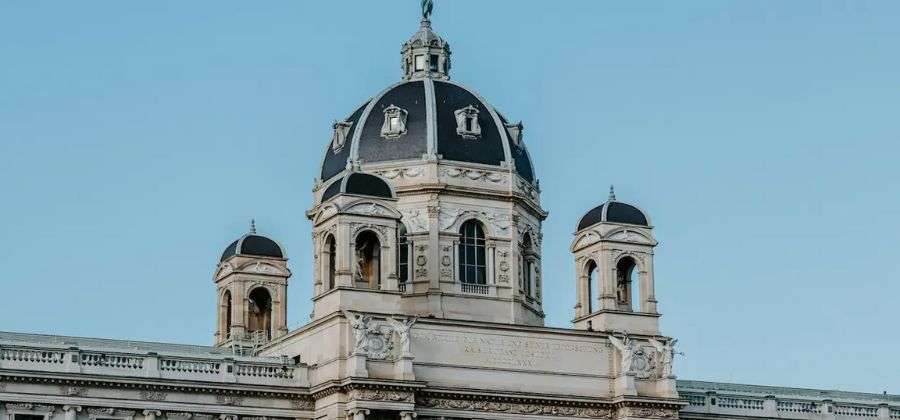Prepare to be awed as you embark on a journey that will take you back millions of years and leave you with a new appreciation for the beauty and complexity of our planet. Join us on this unforgettable adventure, and let’s dive into history!
The Naturhistorisches Museum in Vienna is a treasure trove of natural wonders, offering visitors a unique opportunity to explore the history of life on Earth. The museum has something for everyone, from fossils and meteorites to dinosaur skeletons and precious stones.
The museum was founded in 1889 by Emperor Franz I and Empress Maria Theresa, who were both passionate about science and the natural world. The museum has since become one of the most important natural history museums in central Europe, attracting visitors from all over the globe.
Exhibits at the Museum

The Natural History Museum has a wide range of exhibits that showcase the natural world in all its glory. Here are some of the highlights:
Fossils and Specimens

The museum has an extensive collection of fossils and specimens that illustrate the evolution of life on Earth. The collection includes:
- The Venus of Willendorf, a prehistoric figurine that is over 25,000 years old
- Dinosaur skeletons, including the famous Diplodocus longus skeleton
- Prehistoric creatures such as the Stegosaurus and Allosaurus
- Over 1 million animal species
- Over 100,000 minerals
- Over 800 meteorites
The museum’s collection is so vast that only a fraction is on display.
Digital Planetarium
The museum also has a digital planetarium, which offers visitors a unique and immersive experience. The planetarium features a high-resolution projection system that displays astronomical phenomena, such as the night sky, eclipses, and comets.
Visitors can also learn about the formation of the solar system and the universe.
The Meteorites Room
One of the highlights of the Natural History Museum in Vienna is the Meteorites Room. The museum has an impressive collection of meteorites, including the world’s largest lunar meteorite, weighing in at over 1200 grams.

The museum’s collection also includes a rare Martian meteorite and many other fascinating space rocks worldwide. Visitors to the Meteorites Room can learn about the formation of the solar system and the ongoing study of these extraterrestrial objects.
The Earth Sciences Collection

The museum’s Earth Sciences Collection includes an extensive range of specimens from around the world, including rocks, minerals, and fossils.
The collection features several outstanding specimens, such as the “Petrified Forest” from Chemnitz, Germany, which showcases beautifully preserved fossilized trees from the Permian period.
The collection also includes a section dedicated to Austria’s geology and mineral resources, with exhibits on the country’s mountains, caves, and mineral deposits.
The Human Science Collection
The Natural History Museum in Vienna also has an impressive collection of artifacts and specimens related to human history and evolution.

This collection includes a range of objects, from ancient Egyptian mummies and Roman artifacts to specimens related to the history of medicine and human anatomy.
One of the most fascinating exhibits in the Human Science Collection is the “Hall of Human Evolution,” which showcases human evolution through a series of life-size dioramas depicting our ancient ancestors.
The Museum Shop and Cafe
No visit to the Natural History Museum in Vienna would be complete without a stop at the museum shop and cafe. The museum shop features a wide range of souvenirs, gifts, and educational materials related to the museum’s collections.
Visitors can purchase everything from dinosaur toys and books to fossils and mineral specimens. The museum cafe offers a range of refreshments and snacks, including Austrian pastries, coffee, and ice cream.
Exhibits and Collections you have to check out

The exhibits and collections at Vienna’s Natural History Museum are spectacular. Here are some of the few highlights you won’t want to miss:
- Dinosaur Hall: Here you can Immerse yourself in the world of these prehistoric creatures, the highlight of the dinosaur hall for many visitors is the massive Diplodocus skeleton and a life-sized Stegosaurus.
- Human Evolution: For history buffs you have to explore the human evolution section, here you can find the fascinating narration of the evolution of our species, from the earliest hominids to modern humans.
- Meteorites and Minerals: for many visitors this is the section they most spend time in because of the massive collections. You can just marvel at the stunning beauty and diversity of our planet’s minerals and rocks here. Plus the bonus side you can learn about their formation and properties.
- Insectarium: For insects enthusiasts or just curious minds about biology. Here is an awesome and breathtaking collection of some of Earth’s most incredible and diverse creatures, including rare butterflies and beetles.
- Anthropocene: unlike other museums, this museum in Vienna also highlights a unique perspective about human actions and nature. In this section you can learn about the impact of human activities on the planet, from climate change to biodiversity loss.
Whether you’re a nature lover, a history buff, or just looking for an unforgettable experience, the Natural History Museum has something for everyone. Don’t miss your chance to explore these awe-inspiring exhibits and collections.
Visiting the Museum

The Natural History Museum is located in the heart of Vienna, near the Hofburg Palace and the Vienna State Opera. Here’s what you need to know if you’re planning a visit:
- Admission to the museum is free for children under 19 and for everyone on the first Sunday of every month.
- The museum is open daily from 9:00 am to 6:30 pm, except on Christmas and New Year’s Day.
- The museum has a restaurant and a gift shop where you can purchase souvenirs and books about the natural world.
How to get here
The museum is located in the center of Vienna, near the Maria-Theresien-Platz square. Here are some options for getting there:
- Public Transportation: The museum is easily accessible by public transportation. You can take the U2 or U3 subway lines to the Volkstheater station, which is just a short walk from the museum. Several tram and bus lines also stop nearby.
- Car: If you’re driving, there is a parking garage located directly beneath the museum. However, keep in mind that parking can be expensive in the city center.
- Bicycle: Vienna has an extensive network of bike lanes, and there are several bike rental options available throughout the city. There are also bike racks located outside the museum where you can park your own bike.
No matter how you choose to get there, the Natural History Museum is easy to find and well worth the journey.
Contribution of The Natural History Museum

Well here is an interesting fact about the Natural History Museum. This museum plays an important role in the scientific research community. As you might have already guessed, this museum has an extensive collection of more than 30 million objects, attracting numerous guest researchers worldwide.
Following these guest researchers, the museum also has over 60 scientists who research various fields, such as earth sciences, life sciences, and natural sciences. These scientists regularly conducted research at the museum and have contributed to significant discoveries and breakthroughs in many areas.
Conclusion
Overall a trip to the Natural History Museum in Vienna can be summed up as a wholesome experience that offers visitors an unparalleled opportunity to learn about the natural world and its history.
From its extensive collections of fossils, minerals, and meteorites to its digital planetarium and exhibits related to human evolution, the museum has something to offer visitors of all ages and interests.
Furthermore after reading this we are sure you are feeling inspired to explore Vienna’s rich cultural heritage even further? And we agree you should, don’t stop here. There are lots of you to explore from art to music to science, the city is brimming with incredible museums that are waiting to be discovered. Click here to start planning your visit to Vienna’s top museums and create unforgettable memories that will last a lifetime.
Frequently asked questions
Is there an admission fee for the museum?
Yes, there is an admission fee for the museum. The current rates are €12 for adults, €10 for students and seniors, and €6 for children ages 6-19. Children under 6 years old are free.
Is the museum accessible to wheelchair users?
Yes, the museum is fully accessible to wheelchair users. There are elevators and ramps throughout the building, and accessible restrooms are available.
Can I take photographs inside the natural history museum Vienna?
Yes, photography is allowed in most areas of the museum, but flash photography and tripods are not permitted. Some temporary exhibits may have additional restrictions on photography.
Are guided tours available at the m Vienna natural history museum?
Guided tours are available in several languages for an additional fee. Self-guided audio tours are also available for free with the purchase of an admission ticket.
Is there a gift shop or restaurant on site?
Yes, there is a gift shop with a wide selection of natural history-related items, as well as a café with a variety of snacks, drinks, and meals.



